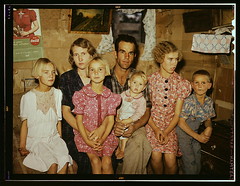You’ve in the realms of getting a divorce. What should you know about custody laws?
- Custody laws differ from state to state, so make sure you know and understand them as they relate to where you live. Questions? Ask a lawyer.
- Custody laws are put in place to protect children. If one parent is mentally unstable, for example, full custody may go to the other parent with supervised visitations being held weekly for the other parent.
- The desire of the child’s parents is also considered when deciding on child custody. One or the other parent may be better suited to take care of issues of schooling and medical care. One parent may even volunteer to be the custodial parent, while the other may say he/she feels incompetent for the task.
- Joint custody may be offered—equal rights for both parents in the raising of their child, when both parents are equal in their ability to care and make decisions for the child.
- Child custody laws are best understood through the assistance of a lawyer who can help you with the process.
- Sometimes, visitation rights to one parent are denied because of potential injury to the child. Because the physical and mental health of the child is so important, if abuse has taken place, visitation rights may be denied to the non-custodial parent.
- Visitation rights are not usually denied to those incarcerated or who have a prison record.
Understanding child custody laws is only your first step. The next is to get an attorney who can work with you and help you with the important task at hand.









